This site uses only a few technical cookies necessary for its operation. By continuing to browse, you accept their use.
To find out more...
To find out more...
Divide and weigh dough into regular pieces
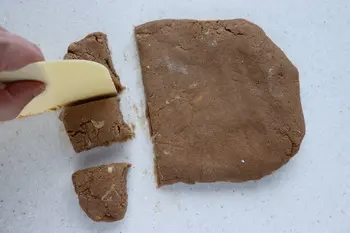
When you prepare dough for cupcakes in a pastry shop or bakery, at some point you're going to have to divide it, i.e. cut it into small pieces, which should all have the same weight.
Sounds simple enough, but is it really that simple?
Sounds simple enough, but is it really that simple?
12 K 5/5 (14 reviews)
Keywords for this post:BakingPastryDoughWeighingDividingTipsRegularityLast modified on: May 30th 2023
Divide and weigh dough into regular pieces
The most natural way to do this is to place the pile of dough in front of you.
Then take enough dough from it to obtain the desired weight.
It's simple, and it works, of course, but without realizing it you're wasting a lot of time, because you'll have to make the right weight from scratch for each dough piece.
To do this, you first need to roll out the dough roughly on your work surface, pressing it down with your hands, and at the same time giving it a vague square or roughly flat rectangle shape, about 1 to 3 cm thick.
Using a pastry cutter, cut out "columns" from the rectangle...
... which you can then cut into pieces.
Weigh each piece to check its weight, adjust if necessary by removing or adding a small piece of dough, then set it aside before moving on to the next.
You'll find that, at first, the pieces you cut won't be the right weight, but as time goes by, your eye will adjust to the desired weight, and you'll need to adjust the weight less and less.
This way of working (in "columns" and "rows") will enable you to divide the dough more quickly and easily.
It's not essential, but once you've got a piece at the right weight, lay it out in rows and columns too (as in the photo), so you'll know how much you've got at a glance.
To sum up: to divide a dough into several small pieces of the same weight, it's much easier and quicker to form it into a rectangle or square, and cut rows and columns from this rectangle.
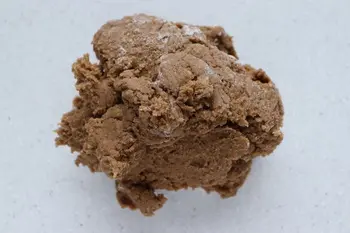
Then take enough dough from it to obtain the desired weight.
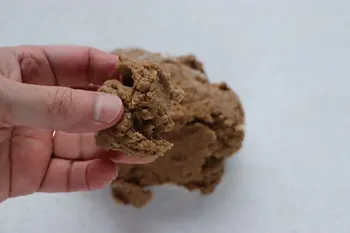
It's simple, and it works, of course, but without realizing it you're wasting a lot of time, because you'll have to make the right weight from scratch for each dough piece.
Can you do better?
Yes, and to do that you have to work like bakers do, i.e. cut the dough into squares.To do this, you first need to roll out the dough roughly on your work surface, pressing it down with your hands, and at the same time giving it a vague square or roughly flat rectangle shape, about 1 to 3 cm thick.
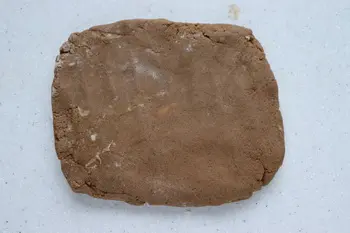
Using a pastry cutter, cut out "columns" from the rectangle...
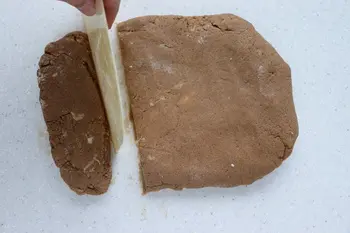
... which you can then cut into pieces.

Weigh each piece to check its weight, adjust if necessary by removing or adding a small piece of dough, then set it aside before moving on to the next.
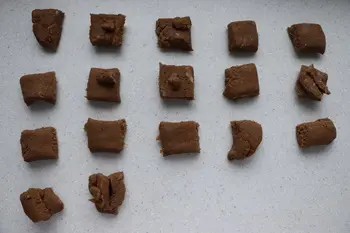
You'll find that, at first, the pieces you cut won't be the right weight, but as time goes by, your eye will adjust to the desired weight, and you'll need to adjust the weight less and less.
This way of working (in "columns" and "rows") will enable you to divide the dough more quickly and easily.
It's not essential, but once you've got a piece at the right weight, lay it out in rows and columns too (as in the photo), so you'll know how much you've got at a glance.
To sum up: to divide a dough into several small pieces of the same weight, it's much easier and quicker to form it into a rectangle or square, and cut rows and columns from this rectangle.
Lasts posts
Butter vs. grease
We often read in a recipe where a pastry is put into a mould that, just before pouring, the mould should be buttered or greased. But what's the difference between these 2 terms?December 1st 20259975
Getting out of the fridge early
Very often when you're cooking, you need to take food or preparations out of the fridge, to use them in the recipe in progress. There's nothing tricky about this: you just take them out of the fridge and use them, usually immediately, in the recipe. But is this really a good method?November 24th 20251,1275
Who's making the croissants?
When you look at a bakery from the outside, you naturally think that in the bakery, the bakers make the bread, and in the laboratory, the pastry chefs make the cakes. It's very often like that, with each of these professions having quite different ways of working, but sometimes there's also one...November 23th 20251,019
Oven height
When we put a dish or cake in the oven, we naturally tend to put it on the middle shelf, and that's what we usually do. But in some cases, this position and height can be a little tricky, so let's find out why.October 8th 20252,7655
The importance of sieving
In recipes that use a fine powder (flour, powdered sugar, etc.), you'll often see the advice to sift before using it. To sift is to pass the powder in question through a sieve (a very fine strainer) before incorporating it into your recipe. It's often advice, but is it really useful?September 3rd 20257,5353
Other pages you may also like
Sorrel and its cooking
Do you like sorrel? This delicious plant with its beautiful bright green leaves, whose subtle acidity goes very well with many other things, including in particular cream, to form with salmon the emblematic dish of the 70's, "Salmon with sorrel" on which was built the beginning of the fame of the...March 19th 202212 K5
Remove bones from fish
Let's talk about fish: It's not a scoop, it's much more pleasant to eat fish from which all the bones have been carefully removed, even if it's a rather painful and time-consuming job, the result is worthy of your efforts. Here are some important points to keep in mind.October 16th 202114 K5
Fruits which can ruin your jelly
There are many ways of making a fruit mousse, but one of the simplest is to prepare a fruit jelly (basically a fresh fruit coulis with gelatine) and then mix this jelly before it sets completely with whipped cream. The result is perfect for filling a charlotte, for example. But do beware;...March 6th 201378 K4.0
Tranché, dissociated, failed, in short... missed!
When preparing a sauce or a cream, there's always a (small) risk that the creamy preparation you're working on will suddenly separate into two parts of different textures: a liquid part, for example, and a more or less solid part, or even become lumpy. It's terribly frustrating, but we'll see...June 19th 202313 K5
The window-pane test in bread-making
The home bread-makers often ask themselves “Have I kneaded my dough long enough?” . A good question, as dough that is insufficiently kneaded will not rise properly or will fall flat when the top is slashed, which is very frustrating. To know when the dough is ready, one can rely on the length...June 16th 202196 K 23.9
Post a comment or question
Follow this page
If you are interested in this page, you can "follow" it, by entering your email address here. You will then receive a notification immediately each time the page is modified or a new comment is added. Please note that you will need to confirm this following.
Note: We'll never share your e-mail address with anyone else.
Alternatively: you can subscribe to the mailing list of cooling-ez.com , you will receive a e-mail for each new recipe published on the site.









